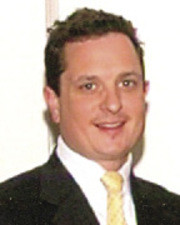
Sargeant Appraisal
In general, I’m extremely jealous of metro-Boston appraisers. While you may think it’s due to the fact you work in a world-class city and have access to some of the best schools, entertainment, sports teams and medical providers in the country, it’s actually because at times you get to appraise in an environment with positive demand metrics. I imagine you create beautiful spreadsheets where increased population lead to new households, new households to additional disposable income, disposable income to new retail demand, and finally supported opinions of the need for new retail construction, when market rent will reach feasibility rent and the timing for construction to begin. You conclude lease-up periods measured in months, test alternate land residuals against each other and generally practice the profession as it is taught and tested. Your client’s ask you insightful questions about pro-rata capture rates and basic employment multipliers all while small birds sing at your office window. However, you need to know that you do all this blissfully unaware that in northern New England there is an entire set of appraisers who practice in an environment of shrinking population and households, retail spend that goes down each year and absorption periods calculated in decades. I understand the concept of “always greener,” and what you do is not easy. But it must be very satisfying to conclude a highest and best use that is not “there is no prospective use that is financially feasible.”
I specialize in “rural” Vermont, loosely defined as the 13 counties not in the Burlington/South Burlington MSA. Since the 2000 census population in this region is down by 2,000 people, total private employment is flat, and basic employment, that involved in the conversion of raw materials into finished goods, is off a total of 23%. Including tear-downs, I recently calculated a “timing for new manufacturing inventory” at 61 years. While employment and construction in beverage manufacturing was a bright spot from 2011 to 2016, micro-brewery employment fell in 2017. I have to call the top of the micro-brew craze now that every single person in Vermont is brewing, canning and selling their own double-IPA. But I digress.
In rural Vermont only medical-based employment has sustained year on year increases since 2000 and, with a population “aging in place,” it is possible to produce credible calculations for the timing of new light-medical and assisted-living inventory. The most popular source of this new inventory is the conversion of economically obsolete former retail and hospitality properties. While light medical space is now routinely created from the conversion of a former retail building on a high-traffic corridor, two relatively large (40 to 80 bed) assisted living facilities in southern Vermont are being created from a vacant former boarding school and a ski resort operating well under design capacity and no longer a going concern. Considering these types of adaptive re-purpose is a critical step in the highest and best use calculation.
In this market where negative demand metrics can extend for a decade or more, land valuation is extremely difficult. Typically, due to a dearth of raw land sales, an extraction analysis is required to support a land value opinion. In order to reflect current valuations these extractions must include a supported opinion of all three forms of obsolescence, especially external (economic) obsolescence due to oversupply. Residential subdivision analyses typically return negative net present values, and land residuals are commonly negative in most forms of new development. Which is why I’m happy to report Edward Bowler, MAI, SRA is teaching Solving Land Valuation Puzzles on April 26 in Concord, NH and on April 27 in Rutland, VT. Bowler, in a 7-hour seminar approved as CE in both NH and VT, will walk us through the six recognized techniques in land valuation and how to use an internal rate of return as a test of financial feasibility.
Sean Sargeant, MAI, SRA is a certified general real estate appraiser at Sargeant Appraisal Service, Rutland, VT.








